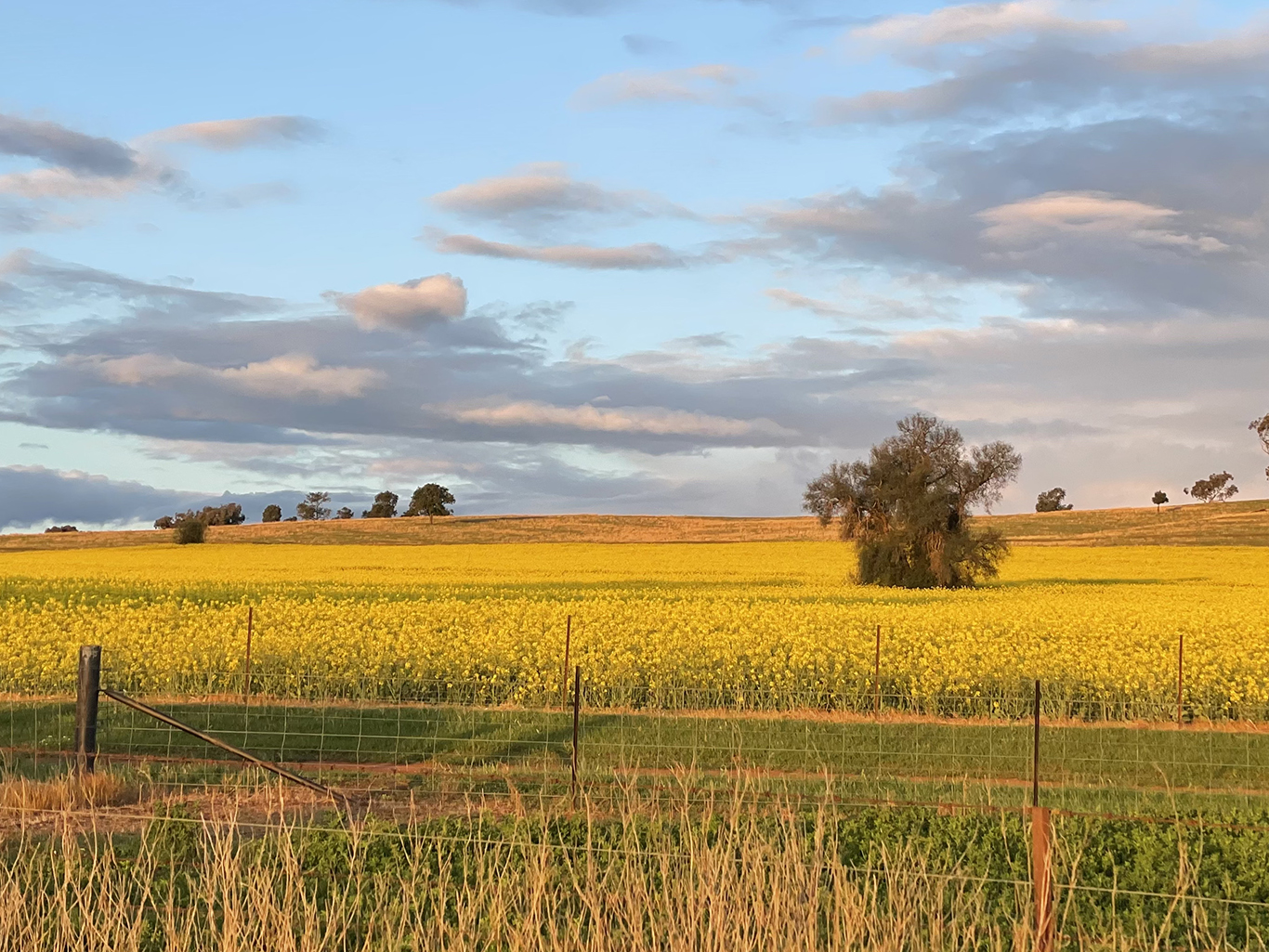
Cowra
A town of war and peace
Cowra sits on the banks of the Lachlan River in Central West NSW. It is a town steeped in history that many Australians are unaware of. The largest POW breakout in British and Australian war history took place in Cowra in August of 1944. Over 1000 Japanese prisoners, who considered a death in battle preferable to the shame of being a POW, attempted to escape. The end result was 234 Japanese, and five Australian men lost their lives, 107 were injured and all of the escapees were recaptured. It’s role as a prisoner of war camp during World War II has shaped Cowras identity and the sixty years since then have seen the town develop into a ‘Centre of World Friendship’. Today Cowra has a special relationship with Japan, the aftermath of tragedy has forged a lifelong friendship.
But Cowra has more to offer than just a history lesson. This charming town is surrounded by vineyards, waterways, pretty countryside and tranquil gardens. Here are a few of the must-see spots on my Cowra list…
Visitor Centre
Most large outback towns have a visitor information centre and most of them are cast from the same mould. You can pick up brochures for local attractions and get great advice for camping or accommodation, even buy souvenirs for family and friends. But the Cowra visitor centre is a step above and an absolute must do on any trip to the town.
The audio-visual presentation about the history of the Cowra is fabulous and should be the first thing on your to do list when you arrive in town. Running for just under 10 minutes the story is told by a hologram of a young girl called Claire. She describes the story of Cowras’ WWII experience from her perspective, in an easy-to-understand narrative, giving an important insight into many of the other places you might visit during your stay.

POW camp
At the end of Sakura Avenue you will find the site of the infamous Cowra POW camp, part of the Cowra Peace Precinct. 18 POW camps operated in Australia, five of which housed Japanese prisoners of war, most of whom were captured in New Guinea and surrounding islands.
Very little remains of the buildings and nothing of the original perimeter or internal fences of the Cowra POW camp. At the entrance there is a shelter with interpretative signage and a replica guard tower with an audio presentation describing the scene. A walking trail with more signage runs through the site tracing the boundaries of each of the prisoner compounds and footing slabs of a few buildings can be seen scattered over the grassy slopes. An impressive five panelled sculpture depicts silhouettes of those directly affected by the Breakout – An Australia guard, A Japanese POW, An Italian POW and An Indonesian mother and child.

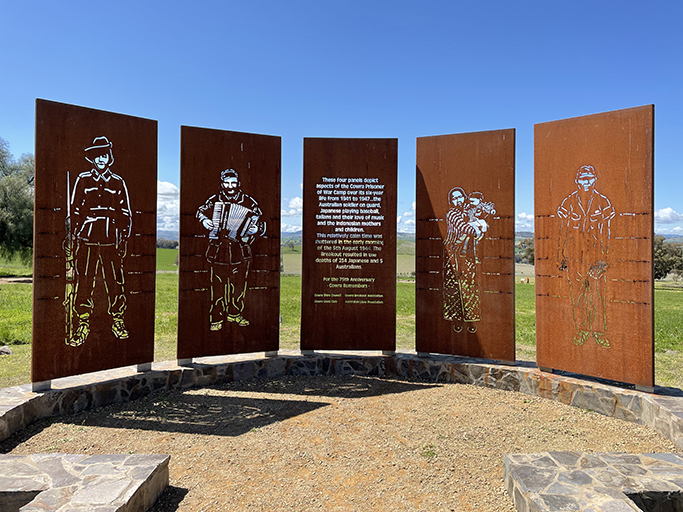
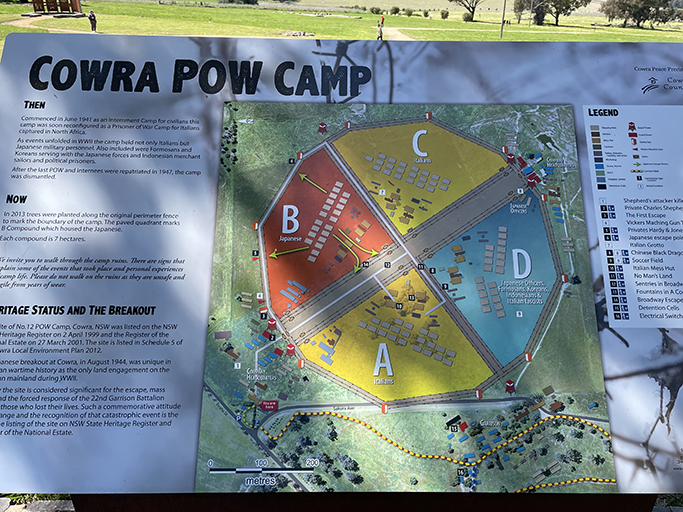
Japanese and Australian War Cemeteries
The 231 Japanese soldiers who were killed in the 1944 Cowra Breakout are buried at the Japanese War Cemetery along with all Japanese Nationals who died on Australian soil during World War II. Up until 1964 members of the Cowra RSL Sub-Branch care for the graves, keeping the lawns mowed and the weeds in check. This mark of respect was the catalyst for the post war friendship between Japan and Cowra.
At the centre of the cemetery is a Japanese stone garden surrounded by memorial trees, it is a tranquil space that encourages reflection. Strolling along the rows of names, reading the dates and ages of those killed brings the harshness of the times into focus.
Next to the Japanese Cemetery is the Australian War Cemetery, the resting place for four of the Australian Soldiers killed in the Cowra Breakout, as well as other service personnel from Cowra who lost their lives in training or from illness. A sombre link of former these foes now lying at rest together.

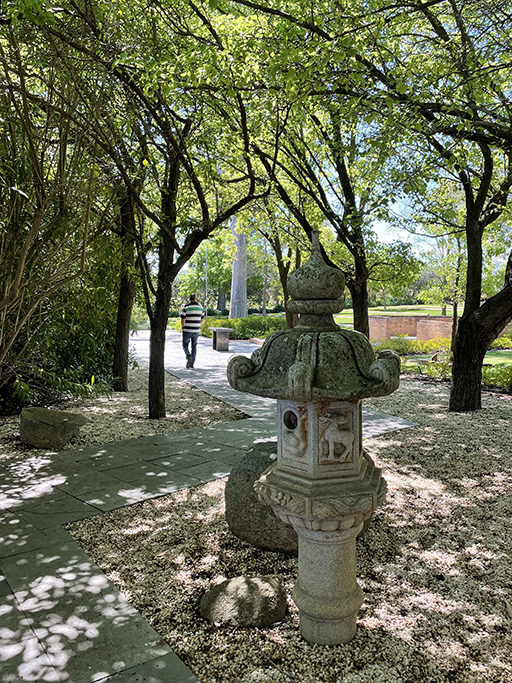

Garrison Gates
On the corner of Binni Creek Road and Amaroo Avenue, you will find the original entrance to the headquarters of the 22nd Garrison Battalion. The Garrison Gates continue to stand guard within Cowra’s residential area flanked by rosemary in a sign of remembrance. This is one of the few remnants of the POW Camp that are still intact today and a stark reminder of just how big the camp was during the war.
The gates are the starting point for the Garrison Walk which follows Amaroo Ave towards Evans Street and the POW Campsite.


Peace Bell
On the corner of The Mid Western Highway and Darling Street you will find the Cowra Civic Square and the Australia’s World Peace Bell. An honour usually reserved for capital cities, Cowra was recognised by the World Peace Bell Association in 1992. Made from melted down coins donated by 106 United Nations countries, Australia’s World Peace Bell is a testament to Cowra’s long-standing contribution to world peace and international understanding. The bell is rung on World Peace Day each year in September, but visitors are encouraged to ring it any time they are in Cowra, and as they do, to reflect on world peace.
Cherry Blossoms
When I think of Cherry blossoms the first places that come to mind are Japan and Washington DC. I was surprised to learn that Cowra makes it into the top ten places in the world to see these stunning trees in bloom. Sakura Avenue is lined with Cherry Blossom Trees, each tree in is allocated to a local child and a Japanese sponsor.
Whilst the trees still have a lot of growing to do, they are a remarkable physical and spiritual link between the Gardens, POW Camp, and cemeteries. Sakura Avenue is the focus of the Sakura Matsuri, a festival held annually at the Japanese Gardens since 1990
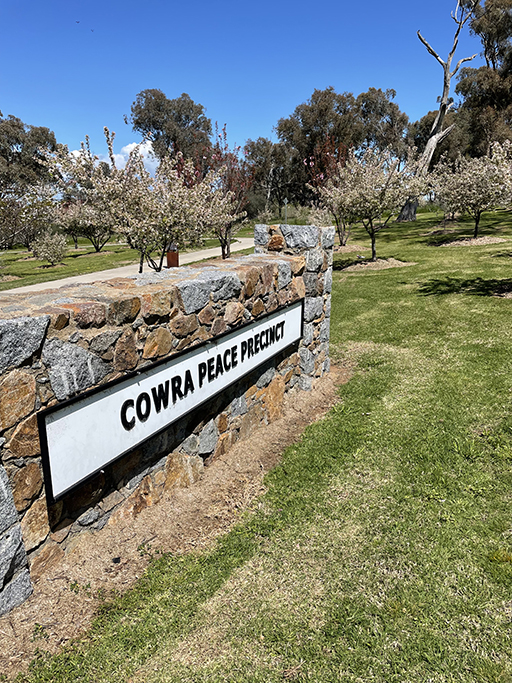

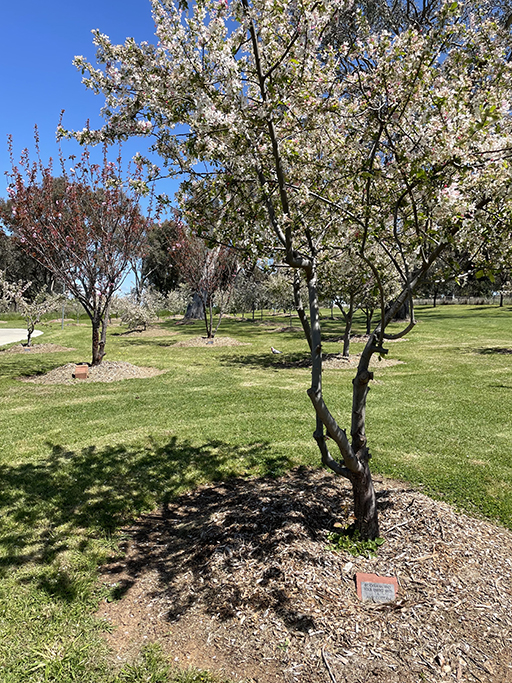

Japanese Gardens
One of the standout attractions in Cowra is the Japanese gardens. Beautiful not just in spring but all year round. The 5 hectares of gardens were designed by Ken Nakajima, one of Japan’s leading landscape designers, and opened in 1979. Designed in the style of a Kaiyushiki or strolling garden, there are over 3km of pathways to explore. The garden features a rocky hillside, manicured lawns and hedges, streams and waterfalls flowing into a picturesque lake, an authentic tea house, a collection of Bonsai and a Cultural Centre with galleries of Japanese artworks and artefacts. We spent an hour wandering through the tranquil gardens and could easily have spent longer. Read about our visit to the Japanese Gardens in Cowra here.
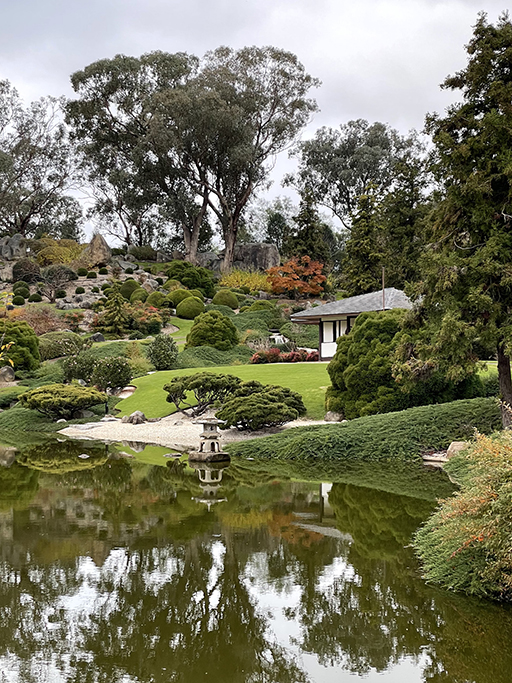


Wyangla Dam
Holding twice the volume of the Sydney Harbour, the Wyangla Lake covers an impressive 54 square km’s. The dam is a popular spot for boating, camping and fishing with visitors and locals alike.
You can park at either end of the dam wall, but you can’t drive across it. We parked at the northern end near the lookout and did the two kilometre return walk to the spillway which was a flowing powerfully at the time. Just south of the spillway there is an unofficial bush track to the right which give a spectacular view of the water thundering through the dam gates.
If you head down through Wyangla village to the base of the wall there is a picnic area with toilets. From this vantage point you get a different perspective looking up at the dam wall towering above.
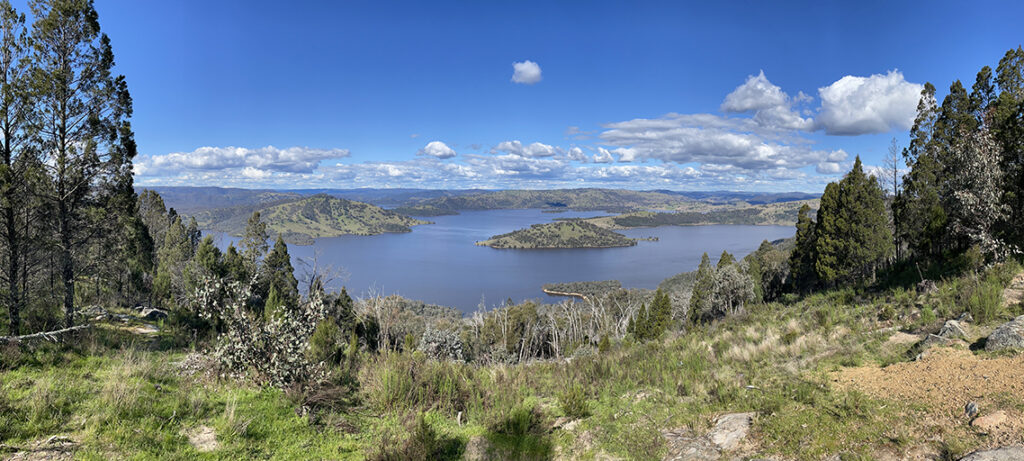

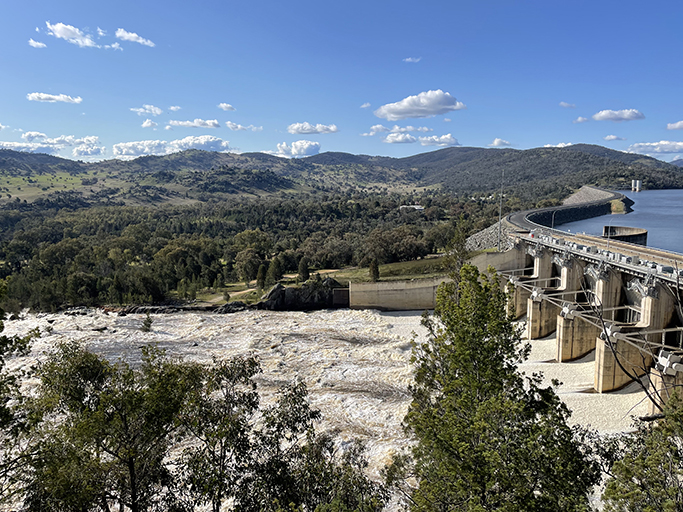
Canola
Explore the Central West of NSW at the right time of year and you will be stunned by the ‘fields of gold’. The spring time canola flowering covers the gentle rolling hills in a patchwork of green and yellow. From Cowra you can head in almost any direction and see glorious fields of Canola, take the Midwest Highway west to Greenethrope, Landra and Grenfell or head north to Canowindra.
Unfortunately, inconsiderate tourists blocking roads and entering private property has left a bad taste in the mouths of local farmers. There are guided tours to see some of the best spots and scenic flights available for a birds eye view. If you are driving yourself please be considerate and safe when you stop to take photos and don’t enter private property without asking permission.



Aboriginal Murals
Under the Lachlan River Bridge there is a series of beautiful Aboriginal murals that depict the Wiadjuri peoples history on the area. Turning left and left off either end of the bridge will take you down towards the river to have a wander and explore. The artwork is by local Aboriginal artist, Kym Freeman with help from local Indigenous children and the community, particularly the handprints.


